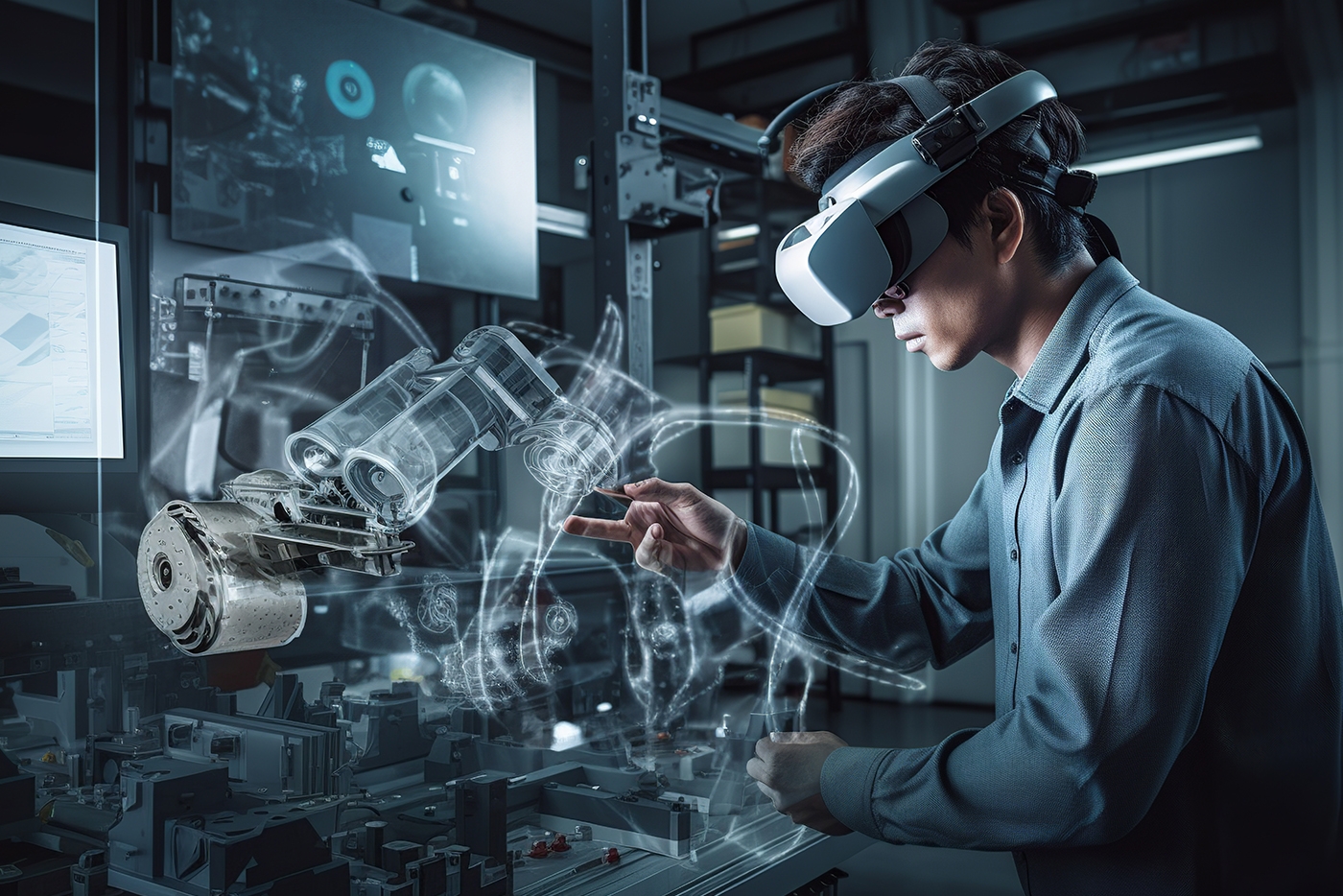How Is AI in Manufacturing Revolutionizing Factory Operations?
 Alias Ceasar
Alias CeasarArtificial Intelligence (AI) is no longer the stuff of science fiction or confined to high-tech labs. It’s now an integral part of modern manufacturing, driving a transformation that’s reshaping factory floors across the globe. From predictive maintenance to real-time quality control, AI is improving efficiency, reducing costs, and enabling smarter decision-making.

In this blog, we’ll explore how AI is revolutionizing factory operations, the key technologies involved, and what the future of AI in manufacturing looks like.
The Rise of AI in Manufacturing
Manufacturing has traditionally relied on automation to streamline operations, but AI takes it a step further. While automation handles repetitive tasks, AI enables machines to learn from data, adapt to new information, and optimize processes autonomously.
According to a report by PwC, AI could contribute up to $15.7 trillion to the global economy by 2030, with manufacturing being one of the primary beneficiaries.
This rise is fueled by several key trends:
The growing availability of big data
Advances in machine learning algorithms
Edge computing and IoT (Internet of Things)
The need for greater efficiency and flexibility in production
1. Predictive Maintenance: Reducing Downtime and Costs
Unexpected equipment failures can be costly. Traditional maintenance schedules, based on time intervals, often lead to over- or under-maintenance. AI solves this through predictive maintenance.
How it works:
Sensors collect real-time data from machinery—such as temperature, vibration, and noise. AI algorithms analyze this data to detect anomalies and predict when a machine is likely to fail.
Benefits:
Reduced unplanned downtime
Lower maintenance costs
Increased asset lifespan
Improved safety
Example:
General Motors uses AI-powered sensors to monitor its production lines. The system can predict potential failures 20–30 days in advance, saving millions in downtime.
2. Quality Control with AI Vision Systems
Manual quality checks are time-consuming and prone to human error. AI-based computer vision systems can inspect products faster and more accurately.
Applications:
Identifying surface defects like cracks, dents, or discoloration
Ensuring proper alignment or fit
Verifying labeling and packaging
Benefits:
Real-time quality assurance
Reduced waste and rework
Consistent product quality
Fewer recalls and customer complaints
Example:
BMW uses AI-based visual inspection systems to detect even the tiniest paint defects in their vehicles, enhancing customer satisfaction and reducing post-production repairs.
3. Smart Manufacturing with Digital Twins
A digital twin is a virtual replica of a physical asset or process. By combining IoT data with AI, manufacturers can simulate, monitor, and optimize operations in real time.
Use Cases:
Testing production scenarios without disrupting operations
Identifying inefficiencies in workflows
Training AI models before real-world deployment
Example:
Siemens leverages digital twins in its factories to optimize the performance of machinery and improve design processes, cutting down development time significantly.
4. AI-Driven Robotics and Automation
AI-powered robots, also known as cobots (collaborative robots), are becoming more intelligent and flexible. Unlike traditional robots that follow pre-programmed paths, AI enables robots to adapt to dynamic environments and perform more complex tasks.
Key Capabilities:
Learning through demonstration
Navigating and working alongside humans
Handling varied materials and object shapes
Benefits:
Higher precision and productivity
Reduced workplace injuries
Scalable and flexible manufacturing
Example:
ABB and KUKA have developed AI-enabled cobots that can switch between assembling electronics and packaging items based on real-time requirements.
5. AI in Supply Chain Optimization
AI extends its value beyond the production line into supply chain management. Manufacturers can use AI to analyze demand patterns, forecast needs, and optimize inventory levels.
Functions:
Dynamic pricing and demand forecasting
Route and logistics optimization
Supplier risk assessment
Example:
Procter & Gamble uses AI to analyze over 500 terabytes of data each day to optimize its supply chain, improving inventory turnover and reducing waste.
6. Energy Efficiency and Sustainability
AI helps manufacturers meet sustainability goals by monitoring and reducing energy consumption. By analyzing usage patterns, AI can suggest ways to cut energy waste and reduce carbon emissions.
Benefits:
Lower utility bills
Improved environmental footprint
Compliance with regulatory requirements
Example:
Schneider Electric uses AI-driven energy management tools to monitor energy usage in factories, achieving up to 30% energy savings in some facilities.
7. Enhancing Workforce Productivity
Rather than replacing workers, AI is augmenting human capabilities. AI-powered assistants can support technicians by providing real-time insights, troubleshooting advice, or guiding them through complex assembly procedures.
Training and Upskilling:
Virtual reality (VR) and AI for interactive training
Digital work instructions tailored by AI to the worker’s experience level
Example:
Boeing uses AI-powered augmented reality glasses that guide technicians step-by-step through the installation of electrical wiring in aircraft, reducing errors by 90%.
The Future of AI in Manufacturing
The next phase of AI in manufacturing is hyperautomation, where AI, IoT, robotics, and edge computing work seamlessly together. Factories will become more self-healing, adaptable, and resilient.
Emerging Trends:
Edge AI: Processing data closer to the source, reducing latency, and improving real-time decision-making.
Generative AI: Automating product design, simulations, and optimization tasks.
AI-as-a-Service (AIaaS): Scalable, cloud-based AI tools that smaller manufacturers can afford.
Long-term Vision:
A fully autonomous “Factory of the Future” where machines self-diagnose, self-correct, and collaborate with human workers in real-time, maximizing output with minimal waste.
Conclusion
AI is no longer a futuristic concept; it’s a transformative force in modern manufacturing. From predictive maintenance to intelligent automation, AI is enhancing every aspect of factory operations, improving efficiency, reducing waste, and driving innovation.
As adoption grows and technologies mature, manufacturers that embrace AI today will be best positioned to lead the industry tomorrow.
Subscribe to my newsletter
Read articles from Alias Ceasar directly inside your inbox. Subscribe to the newsletter, and don't miss out.
Written by
